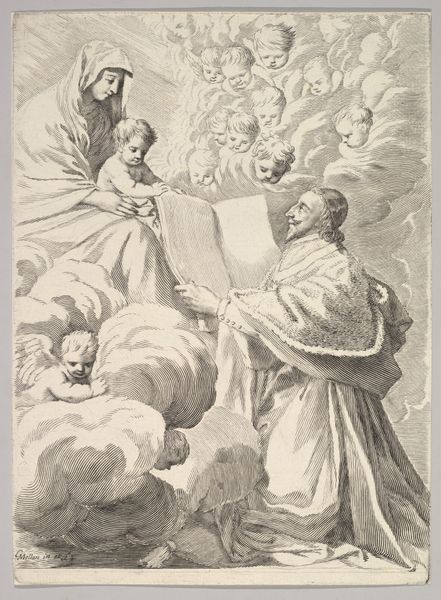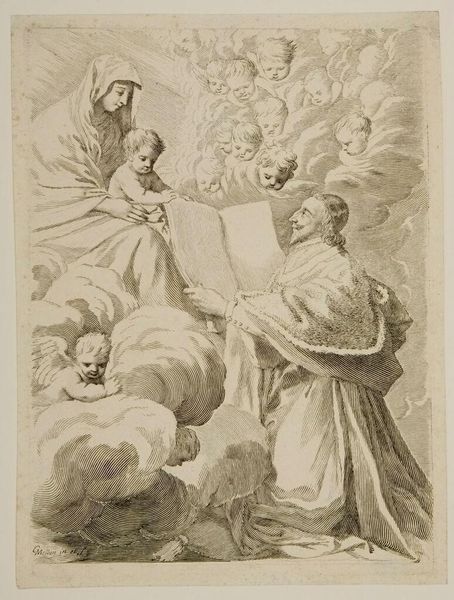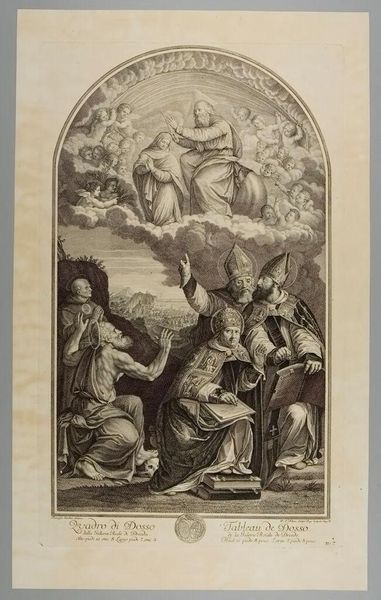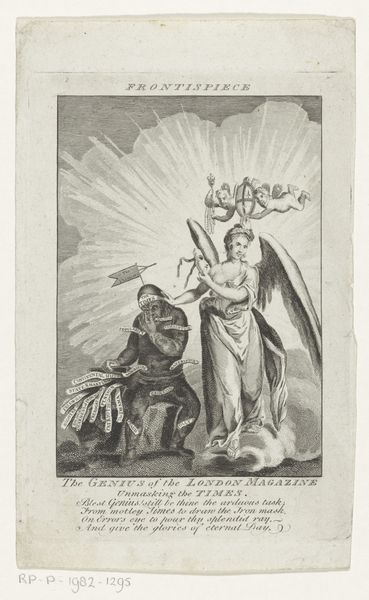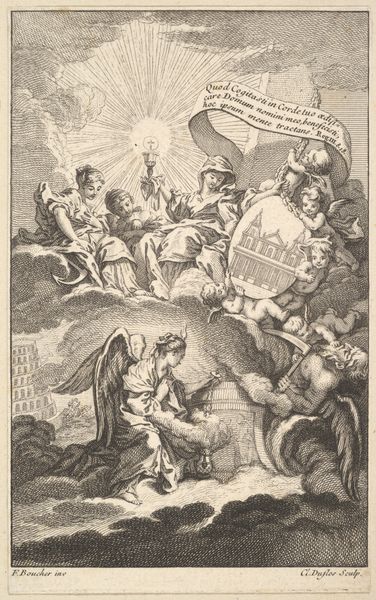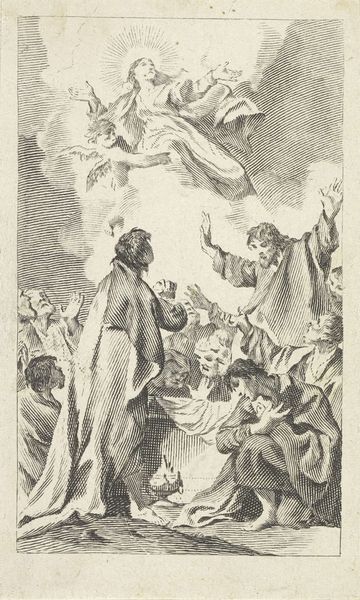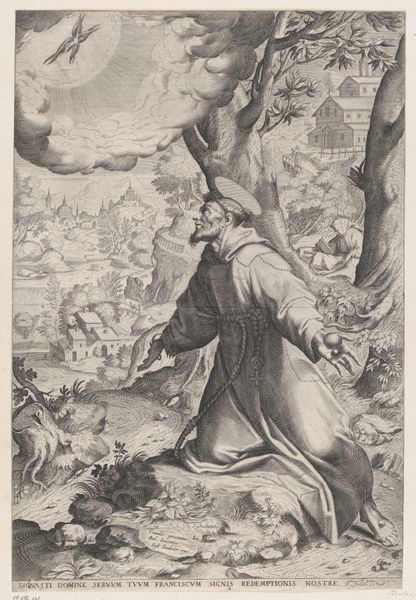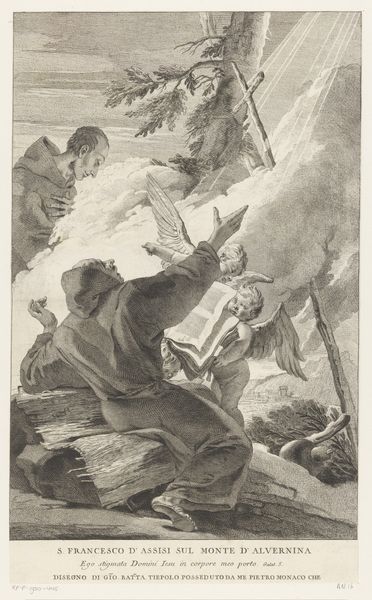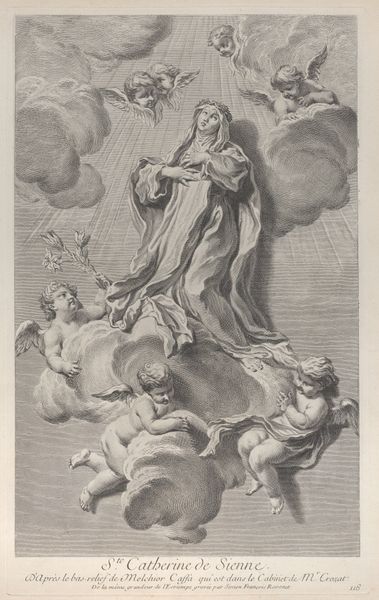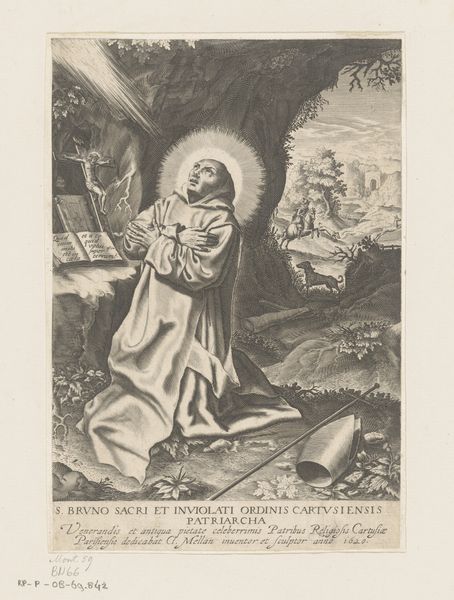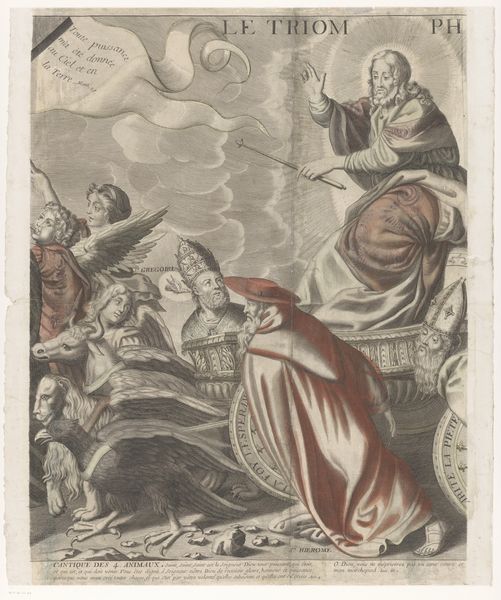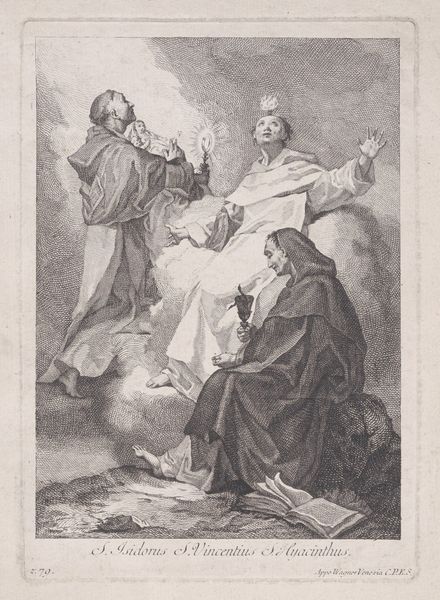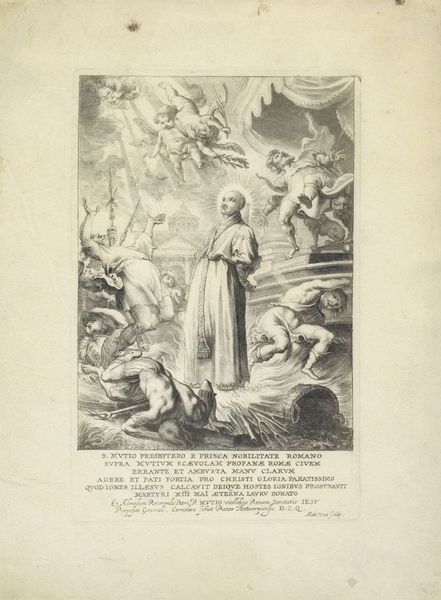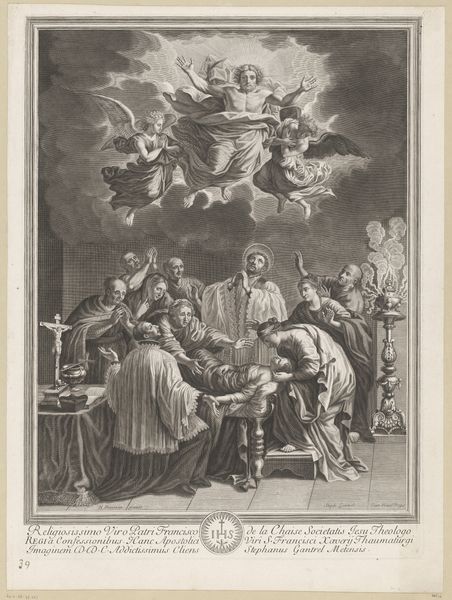
Armand-Jean du Plessis hertog van Richelieu presenteert een boek aan Maria met Kind c. 1646
0:00
0:00
drawing, etching
#
drawing
#
allegory
#
baroque
#
etching
#
old engraving style
#
etching
#
figuration
#
history-painting
Dimensions: height 215 mm, width 158 mm
Copyright: Rijks Museum: Open Domain
Curator: What a fascinating print. This etching, dating back to around 1646, is titled "Armand-Jean du Plessis, Duke of Richelieu, Presents a Book to the Virgin and Child." It's attributed to Claude Mellan, and we have it here at the Rijksmuseum. Editor: The delicacy of line is just astounding! And the atmosphere... it’s reverential, yes, but almost unsettling. All those cherubic faces staring down, and the figure of Richelieu presenting that massive volume... it feels weighty, both literally and figuratively. Curator: Exactly. Mellan was commissioned to create imagery legitimizing powerful figures. The image places Richelieu, a prominent statesman and Cardinal, within a religious and political hierarchy. Note how he's kneeling, presenting a book titled "La Perfection du Chrestien," or "The Perfection of the Christian." It's a visual declaration of his devotion, but also a strategic assertion of power under the guise of religious piety. Editor: The Virgin and Child floating on those clouds, bathed in a celestial light… their placid expressions provide a striking contrast to Richelieu's active presentation. Are those his intended audience, or witnesses to his piety for posterity? The upward gaze is mirrored in those myriad cherubs—are they approving of this merging of the secular and the sacred? It is heavy with significance and ripe for unpacking. Curator: Yes, absolutely. Baroque art often utilized allegory to convey complex messages about the social order, the relationship between church and state, and, of course, the personal virtue of the patron. The very medium itself contributes, right? Etchings were often reproduced and circulated widely, allowing this image of Richelieu's devoutness and authority to reach a broad audience and establish him a defender of not just the faith but France. Editor: This dance between personal ambition and divine authority… it is a tension captured beautifully. Richelieu offers the "Perfection of the Christian", but his own pursuit of power, both political and religious, permeates the image. It resonates with contemporary debates of religious roles within governments—even now the symbolism feels current. Curator: Indeed. What Mellan created here serves as both a historical document and a symbolic statement about power, piety, and the carefully constructed images that shaped public perception of key figures of his time. Editor: I'll leave with the lasting impression of looking into an entire political landscape via nuanced image-crafting. Mellan offers a moment frozen and ready to play out with meanings old and new for centuries to come.
Comments
No comments
Be the first to comment and join the conversation on the ultimate creative platform.
